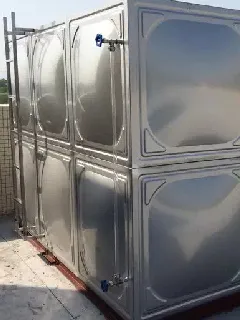loading...
- No. 9, Xingyuan South Street, Dongwaihuan Road, Zaoqiang County, Hengshui, Hebei, China
- admin@zjcomposites.com
- +86 15097380338
- Welcome to visit our website!
frp railing
Exploring the Benefits of FRP Railing Systems
In the ever-evolving world of construction and architectural design, materials play a crucial role in determining the durability, aesthetics, and functionality of a structure. Among the various materials available, Fiber Reinforced Polymer (FRP) has emerged as a popular choice, particularly when it comes to railing systems. Utilizing FRP for railings offers a multitude of benefits, making it an attractive option for both residential and commercial projects.
Exploring the Benefits of FRP Railing Systems
Another significant advantage of FRP railings is their resistance to corrosion and chemical degradation. Unlike metal railings that can rust over time, or wooden railings that are susceptible to rot and insect infestations, FRP is inherently resistant to a range of environmental factors. This durability minimizes maintenance and replacement costs, making FRP railings a cost-effective long-term solution. In industrial or coastal environments where exposure to chemicals and salt is a concern, FRP railings demonstrate superior performance, maintaining their structural integrity and appearance through years of exposure.
frp railing

Aesthetically, FRP railings can be designed to suit a wide variety of architectural styles. They can be molded into various shapes and sizes, allowing for creative and unique designs that enhance the overall look of a building. Additionally, FRP can be manufactured in different colors and finishes, providing architects and designers with flexibility in their projects. This customization allows for seamless integration with the surrounding environment, making FRP railings a popular choice for both modern and traditional settings.
Moreover, FRP railing systems are environmentally friendly. The materials used to produce FRP are recyclable, reducing the overall environmental impact compared to traditional railing materials. Additionally, the long lifespan of FRP means that fewer resources are consumed over time, aligning with sustainable building practices. For construction projects aiming for green certification, incorporating FRP railings can contribute positively to achieving that goal.
Safety is another critical aspect to consider. FRP railings often have enhanced slip resistance, making them safer for use in areas prone to wet conditions. Their structural integrity also means that they can effectively prevent falls, providing essential protection in both residential and commercial environments. This combination of safety and durability is vital in public spaces, where the well-being of users must always be a priority.
In conclusion, utilizing FRP railing systems in construction and design offers an array of benefits that make them a compelling alternative to traditional materials. Their strength, corrosion resistance, aesthetic versatility, eco-friendliness, and safety features position them as a smart choice for a wide range of applications. Whether for a residential deck, a commercial balcony, or an industrial walkway, FRP railings provide a reliable and visually appealing solution that meets the demands of modern architecture. As the construction industry continues to innovate, FRP is sure to play a significant role in the future of building design.
-
The Rise of FRP Profiles: Strong, Lightweight, and Built to LastNewsJul.14,2025
-
SMC Panel Tanks: A Modern Water Storage Solution for All EnvironmentsNewsJul.14,2025
-
GRP Grating: A Modern Solution for Safe and Durable Access SystemsNewsJul.14,2025
-
Galvanized Steel Water Tanks: Durable, Reliable, and Ready for UseNewsJul.14,2025
-
FRP Mini Mesh Grating: The Safer, Smarter Flooring SolutionNewsJul.14,2025
-
Exploring FRP Vessels: Durable Solutions for Modern Fluid HandlingNewsJul.14,2025
-
GRP Structures: The Future of Lightweight, High-Performance EngineeringNewsJun.20,2025
